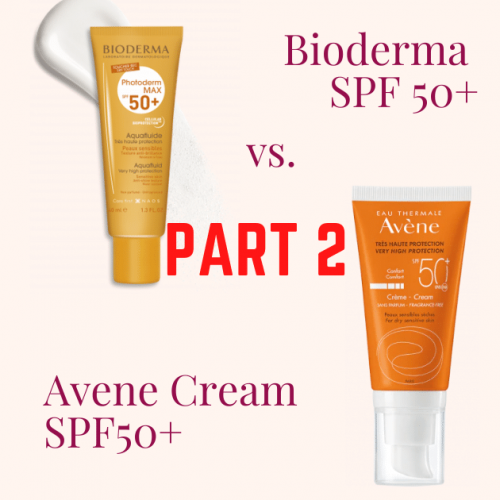At the request of a reader I compared too very high SPF sunscreens from Bioderma and Avene. You can read all about it in this blog.
The reader’s follow up query (via email) is this:
My concerns or general thoughts are the following, would be great if you could give me an answer: Can the PPD vary based on the ingredient, as in Can avobenzone at a concentration of 3 or 5 % itself provide a higher ppd than Univul A at 10 percent? I don’t know any info on that..My general observation is that for sunscreens that claim high ppd, they use avobenzone over univul a or tinosorb. Eg: ISDIN. Their spf 50 sunscreen has Univul A, but a version specifically for pigmentation/dark spots has avobenzone as main ingredient. Is avobenzone better at protection than univul a, I know it is unstable but just adding octocrylene make it 90% more stable. Would love to hear your thoughts
Before I answer this quite technical question on sunscreen filters, I want to remind you that to get the best out of your very high UVA protection sunscreen, focus on these best practices:
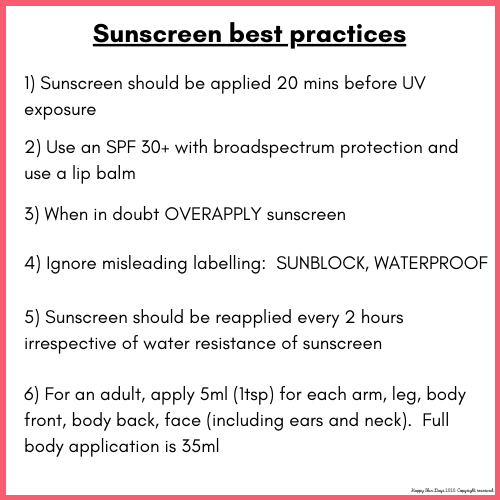
What do I want from UVA filters?
The EU defines “UV filters” is substances which are exclusively or mainly intended to protect the skin against certain UV radiation by absorbing, reflecting or scattering UV radiation.
We want UVA filters to protect against the following damages:

What are Avobenzone, Uvinul A, Tinsorb?
These are names of UVA sunscreen filters. These are the INCI and (common names) of these filters:
- Butylmethoxydibenzoylmethane (Avobenzone)
- Diethylamino Hydroxybenzoyl Hexyl Benzoate (Uvinul A). Abbreviated to DHHB as well
- Bis-Ethylhexyloxyphenol Methoxyphenyl Triazine (Tinsorb S). Abbreviated to BEMT
- Methylene Bis-Benzotriazolyl Tetramethylbutylphenol (MBBT) (Tinsorb M). Abbreviated to MBBT
Apart from Avobenzone, the remaining filters are “new style” filters, whose characteristics include:
- Photostable (do not start to breakdown as soon as they come out of bottle. Unlike Avobenzone. The US FDA on Avobenzone writes: “Avobenzone’s efficacy decreases by 50% – 90% after 60 minutes of exposure to sunlight.”
- Large in size (all are >500 Daltons, which in plain English means dermal absorption does not take place)
- Do not need to be present in massive quantities to be effective (e.g, Even 1.5% DHHB gives PA++ rating, assuming no other filters are present)
- Have a synergestic effect on protection against UVA
- Some will provide photostability to Avobenzone, especially BEMT
Why do so many sunscreens use Avobenzone?
Despite its major drawback (i.e., its photounstable), Avobenzone provides superior protection against UVA1. As most of UV radiation that we are seeking protection against is UVA1, Avobenzone is here to stay.
The above can be illustrated using the graphs below. The area under each graph represents UVA absorbance of the filter and the larger this area is, the more efficient the filter is and the higher the PPD.
Avobenzone at 3%

Avobenzone at 5%
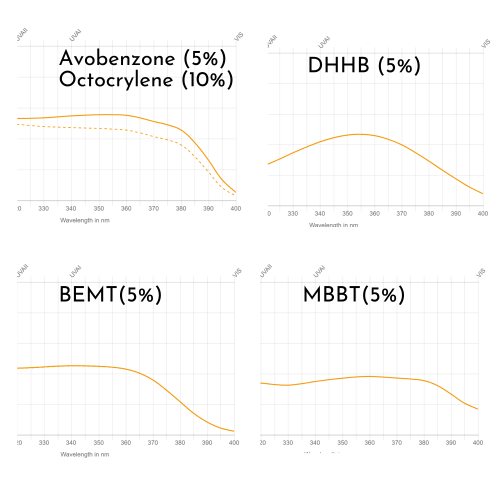
I hope you can agree that Avobenzone is the winner in each instance.
How do I know if Avobenzone in a sunscreen is present in a photostable form?
These are rules of thumb that I follow:
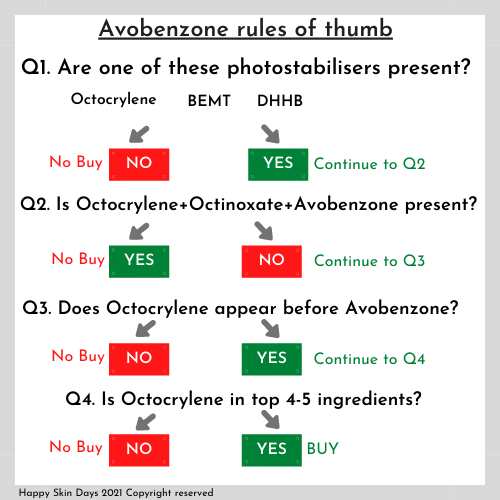
- Avobenzone must be present with a photostabiliser
- Most common stabiliser is Octocrylene
- Octocrylene must be > than Avobenzone, so appear before Avobenzone in ingredient list. Ideally, in the first 3 ingredients
- Octinoxate + Octocrylene + Avobenzone is a big NO (Octinoxate destabilises the Avobenzone and itself)
- Less common stabilisers used are BEMT and DHHB
- I would have to look at sunscreen to take a call

Is there a difference between the level of protection offered by Avobenzone at 3% and 5%?
Yes, there is. The area under the curve represents UVA absorbance and the larger the area under the curve the better. As you can see from the graph above, absorbance is better when Avobenzone is 5% and the PPD is also higher at the larger percentage.
(I have assumed Octocrylene at 2x Avobenzone to stabilise Avobenzone).
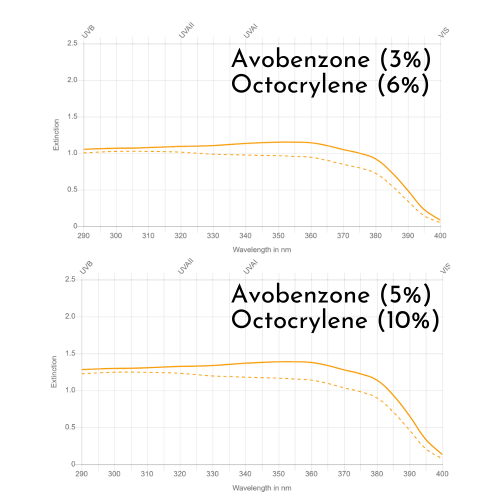
Concluding remarks
I have to admit this is quite a geeky blog and if anyone has any questions, drop me a line at email@happyskindays.com or leave a comment!
HAPPY SKIN DAYS. COPYRIGHT RESERVED 2021. I am a non-affiliated skincare blogger. I invest my own resources in researching and creating content for my blog. The contents of this blog, including images are protected by copyright law(s). My content cannot be replicated without my consent. You can write to me at email@happyskindays.com. I will file criminal and civil charges for copyright infringement.
